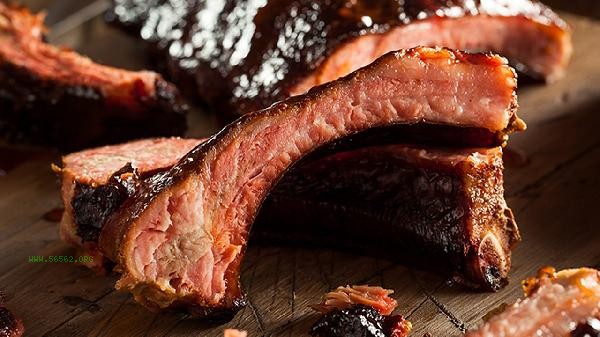When fresh pork has a slight odor, it can be removed by soaking, blanching, seasoning, and pickling methods. Pork odor may be caused by improper transportation and storage, residual blood and water, fat oxidation, and other factors. Targeted treatment is needed to avoid affecting food safety.

1. Soak to remove flavor
Cut the pork into chunks and put them in cold water. Add a small amount of salt or white vinegar and soak for half an hour. Salt can help precipitate residual blood, while acetic acid can decompose some odorous substances. After soaking, rinse repeatedly with running water until the water becomes clear. This method is suitable for the fishy odor caused by incomplete blood discharge, and has a more pronounced effect on tender meat parts.
2. Blanching treatment
Boil in cold water and add pork, ginger slices, scallions, and cooking wine. After boiling, skim off the foam and continue boiling for two minutes before removing. High temperature can cause proteins to solidify and lock in the freshness, while also evaporating some sulfide odors. Note that the blanching time should not be too long to prevent the meat from turning into wood. It is suitable for handling pork with a slight smell of decay.
3. Seasoning masking
Marinate pork with heavy flavored seasonings such as soy sauce, oyster sauce, and five spice powder for at least half an hour. The volatile components in spices can combine with odor molecules, and substances such as allicin and Sichuan peppercorn can cover up unpleasant odors. This method is suitable for the Hala flavor produced by fat oxidation. It is recommended to store it refrigerated during pickling to avoid spoilage.

4. Physical adsorption
After drying the surface moisture of pork, wrap it in activated carbon powder or tea residue and let it stand for twenty minutes. Porous structural materials can adsorb some free odor molecules, and tea polyphenols in tea also have antibacterial effects. After processing, the adsorbent needs to be thoroughly removed, suitable for refrigerated pork with surface odor.
5. High temperature cooking
uses high-temperature cooking methods such as stir frying, deep frying, or charcoal grilling to generate aromatic substances through Maillard reaction to mask off odors. When frying, the oil temperature should reach 70% hot, and when grilling, honey can be brushed to accelerate the formation of burnt aroma. This method can handle the odor of metabolites produced by microbial reproduction, but may increase the risk of carcinogens.

When purchasing pork in daily life, one should observe whether the color is bright red and whether the texture is moderately elastic, and avoid buying meat with obvious rancid taste. Processed pork is recommended to be consumed on the same day. If the odor continues to worsen or the meat is sticky, it should not be consumed. Long term storage requires packaging and freezing, and when thawed, it should be placed in the refrigerator to slowly thaw. Cooking with natural deodorizing ingredients such as ginger and perilla can enhance flavor and reduce health risks.








Comments (0)
Leave a Comment
No comments yet
Be the first to share your thoughts!